I going to take a break from my “wildlife only” rule as this was possibly a once in a lifetime experience. Barry Marts and I traveled to eastern Tennessee in hopes of seeing the total eclipse of the Sun. Of course weather is the big unknown and you roll the dice. We took off on Sunday morning and made a butterfly stop at Grayson Highlands State Park in SW Virginia. This is the location of Mt. Rogers, the highest elevation in that state. The park contains many hiking trails leading to the high point that have beautiful vistas, which is somewhat unusal in the eastern part of the lower 48. The day was partly cloudy with temps in the low 70’s. We parked at a trail head located at 4,600 ft and hiked a mile and a half up to 5,400 ft, still 2.5 miles from Mt. Rogers. Mt. Rogers was not our goal, rather the vistas, grasslands and wild ponies were. During the hike we found 22 species of butterflies which included a Harvester (seen by Barry), many Aphrodite Fritillaries and several fresh American Coppers. After leaving Grayson Highlands we drove to Kingsport,TN where to spent the night. This would leave relatively short 2 hour 15 minute drive early the next morning. We left the hotel at 6:00 am and arrived at our eclipse location at Athens Regional County Park in Athens, TN at 8:20 am. It was hot and humid. About 10,000 people were estimate to be in that park when all was siad and done. All we could do was hope for no clouds during the event. While waiting for the eclipse to begin (shortly after 1:00 pm) we walked along a trail in the park and picked up a few new leps for the year. We located several Carolina Satyrs, Cloudless Sulphurs, an American Snout and a nice Long-tailed Skipper.
The throngs of people attempted to stay cool from the humid skies with temperatures in the lower 90’s. Progression of the eclipse crescent was watched on the ground through leaves of trees on the asphalt parking lot and also with various homemade pinhole projection devices. I took shots every 20 minutes or so with my 400mm lens until we neared totality and then commenced to take pictures more frequently as the big moment approached. I made it a point not to get too wrapped up in the totality phase fiddling with the camera. I wanted to experience the majestic view of the Sun’s corona naked eye for a bit before getting back to picture taking. As the moment of totality came near I looked to the west and saw a very dark sky…. the shadow of the Moon. The crowds in the park started to make more noise and then the famous “Diamond Ring” effect occurred. At this point 99.x% of the Sun’s light was being blocked by the Moon and even though it was noticeably darker than a full Sun it was still fairly light. Suddenly, someone threw a light switch and there is was… the corona! Stunning and awe inspiring I yelled at the top of my voice “AWESOME!”. A couple of stars became visible (notable was Regulus in Leo which is seen in one of the shots below) as did Venus and Jupiter. After taking in the sights visually I got down to the business of photographing this phase. I took off the neutral density filter that had been used during the partial phases and set my camera to take bracketed exposures of the corona. I had preset my camera settings at home a few days before and could only hope that something would turn out. After getting home and looking at the sequence of photos I was quite happy with the results. In summary; You can watch all of the videos and look at photos of a total solar eclipse but they do not do justice compared to what your senses experience by actually being there. God willing, I hope to see the next one the U.S. in April of 2024. I hope some of you do also. You will never forget it.
Click on any image below to enlarge
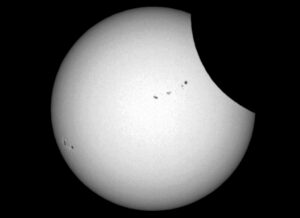 |
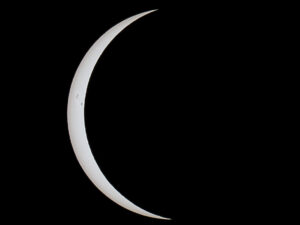 |
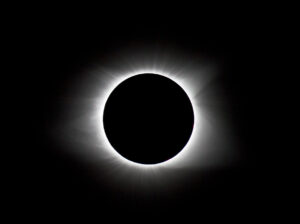 |
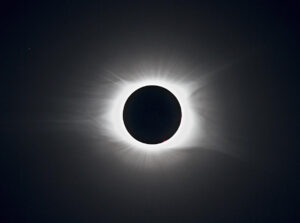 |
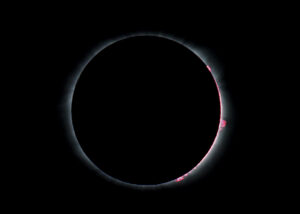 |
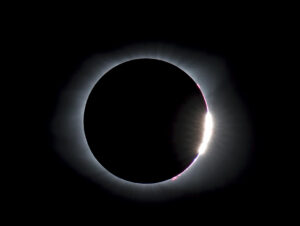 |
